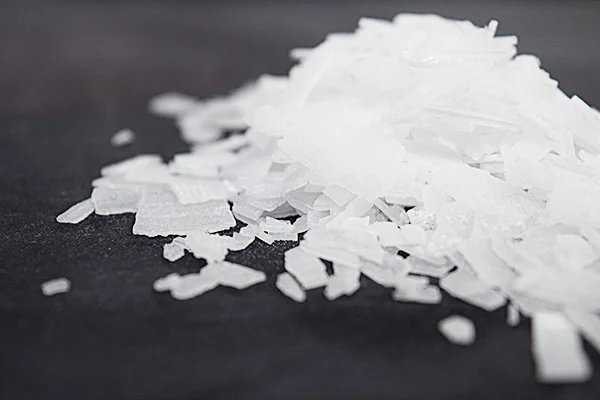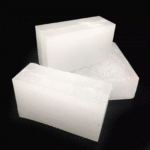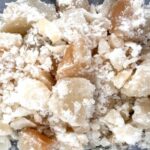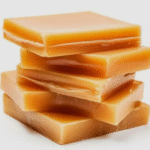Use of Polyethylene Wax in Modern Industries
Polyethylene wax, also known as PE wax, is a synthetic wax derived from polyethylene, a widely used polymer. It is produced through the polymerization of ethylene gas, resulting in a product with a high molecular weight. Polyethylene wax has a range of unique properties that make it suitable for various applications across different industries. Let’s explore the key features and uses of PE Wax.
What is Polyethylene Wax?
Polyethylene Wax (PE Wax) is a low molecular weight polymer wax derived from ethylene. It’s available in various forms such as flakes, powders, beads, and granules. Known for its hardness, high melting point, lubricating properties, and compatibility with other materials, PE wax is a go-to additive in multiple industrial processes.
Let’s explore the top uses of PE Wax and how it enhances the performance and processing of materials across industries.
Composition and Physical Properties:
Polyethylene wax is composed of long chains of polyethylene molecules. These chains are typically branched or have a low degree of branching, which affects the properties of the wax. PE Wax is available in different forms, such as powders, flakes, or pastilles. It has a low melting point, usually ranging from 100°C to 140°C, depending on the specific grade.
Benefits of Using PE Wax
-
✅ High thermal and chemical stability
-
✅ Excellent lubrication and flow improvement
-
✅ Enhances scratch, abrasion, and water resistance
-
✅ Versatile compatibility with plastics, inks, rubbers
-
✅ Non-toxic and cost-effective
Industrial Uses of Polyethylene Wax
Lubrication and Slip:
One of the primary applications of polyethylene wax is in lubrication. It has excellent slip and anti-blocking properties, reducing friction between surfaces. PE Wax can be used as an additive in various lubricants, including greases, oils, and coatings. It helps improve lubricity, reduce wear and tear, and enhance the performance of moving parts.
Processing Aid:
Polyethylene wax serves as a processing aid in the plastics industry. It can be added to polymer formulations, such as polyethylene, polypropylene, and PVC, to improve processing characteristics. PE Wax acts as a lubricant and internal mold release agent, enhancing the flow properties of the molten polymer and facilitating the release of the finished product from molds.
Surface Modification and Enhancing Properties:
Polyethylene wax is used for surface modification and enhancing properties of various materials. It can be applied as a coating to enhance the gloss and smoothness of surfaces, such as paper, cardboard, and plastic films. PE Wax can also be used to improve the printability, heat-sealability, and water repellency of these materials.
Hot Melt Adhesives:
Polyethylene wax finds applications in the formulation of hot melt adhesives. It acts as a viscosity modifier and flow control agent, ensuring proper adhesive properties and application characteristics. PE Wax also improves the bond strength and heat resistance of hot melt adhesives.
Paints, Inks, and Coatings:
Polyethylene wax is used in the formulation of paints, inks, and coatings. It can improve the scratch resistance, mar resistance, and anti-blocking properties of these products. PE Wax also helps to reduce pigment settling, enhance flow and leveling, and provide a smooth, glossy finish.
Masterbatch and Filler Dispersant:
In the plastics industry, polyethylene wax is utilized as a dispersant for color masterbatch and filler compounds. It helps to evenly distribute pigments and fillers within the polymer matrix, ensuring uniform coloration and improved mechanical properties in the final product.
Grades of Polyethylene Wax Available
-
Oxidized PE Wax – used in water-based systems, enhances dispersibility
-
Micronized PE Wax – for inks, coatings, and high-precision applications
-
Low-Density and High-Density PE Wax – customized for specific melt points and hardness levels
Summary
Polyethylene wax is a synthetic wax derived from polyethylene with unique properties. It finds applications in lubrication, processing aid, surface modification, hot melt adhesives, paints, inks, coatings, masterbatch, and filler dispersant. PE Wax offers versatility and plays a crucial role in various industries, enhancing the performance and properties of different materials and products.
Explore the versatile uses of Polyethylene wax in plastic processing, inks, coatings, rubber, and polishing. Learn how this synthetic wax enhances performance across industries.
-
PE Wax Applications
-
Industrial Wax Usage Guide
-
PE Wax Processing Benefits
-
Synthetic Wax for Plastics
Pars Universal Bitumen-Ltd: Your first choice for PE Wax Sourcing
Quality Assurance:
PUB-Ltd ensures the highest standards of quality and purity in its PE wax products, with rigorous quality control measures and testing procedures in place to guarantee consistency and performance.
Customized Solutions:
PUB-Ltd offers customized PE wax solutions tailored to meet the specific requirements and applications of industrial clients, providing flexibility and versatility in product formulations.
Technical Expertise:
With extensive experience in wax production and formulation, PUB-Ltd provides valuable technical expertise and support to assist clients in optimizing their processes and achieving desired outcomes.
Reliable Supply Chain:
PUB-Ltd maintains a reliable supply chain network to ensure timely delivery of PE wax products to clients worldwide, minimizing disruptions and downtime in industrial operations.
Contact Pars Universal Bitumen-Ltd
For more information or to place an order, please contact PUB-Ltd sales team @ Contact Us.
Our Expert will be in touch with you to guide you about the Use of PE Wax, that can be produced according to your project requirements. Please Get in touch with us for discussing your project details. PUB-Ltd As Your PE Wax Supplier





